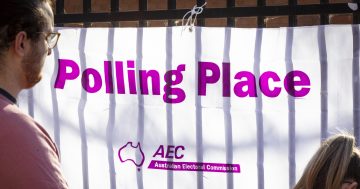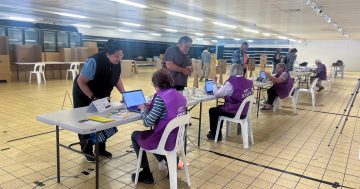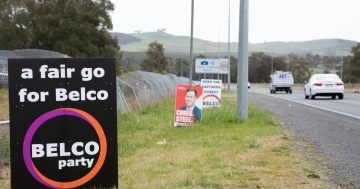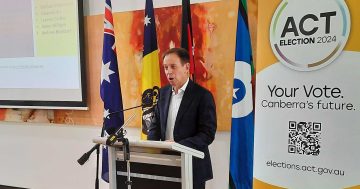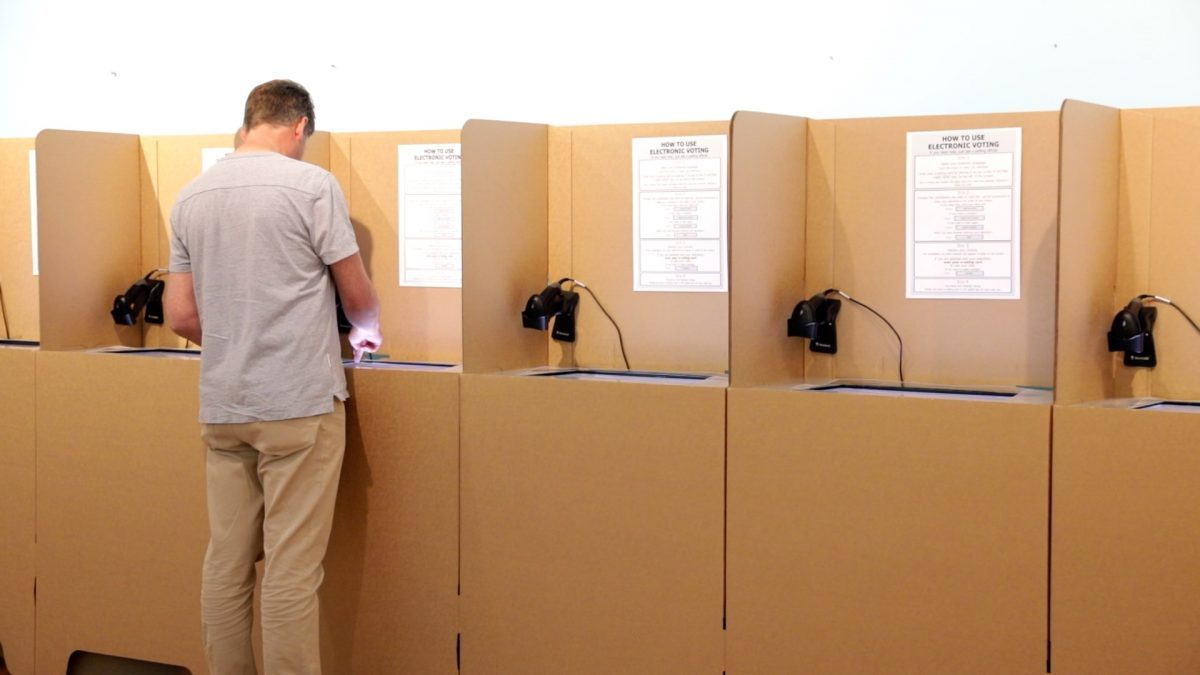
Early voting in the ACT starts on Tuesday 8 October. Photo: Region.
The ACT election is coming up soon. If you’ve been avoiding it so far, we’ve provided this comprehensive guide to answer all your what, why, how, where and when questions, making it as easy as possible for you to cast your vote.
What is this upcoming election all about?
Every four years, Canberra residents get to vote in their local ACT election.
Residents vote to elect 25 members of the Legislative Assembly – members of a political party or independents.
The party (or coalition of parties and independents) with a majority of Legislative Assembly members (13 or more) get to form government and decide on the chief minister.
At present, ACT Labor (who hold 10 seats) and the ACT Greens (who hold six seats) have joined together to form government. These two parties have shared power in the ACT for the past 16 years.
The Canberra Liberals are the only other presence in the current Legislative Assembly, holding nine seats.
Groups such as the Independents for Canberra, Belco Party and various other independents are contesting the upcoming election.
What are electorates?
For local elections and voting purposes, the ACT is divided up into five different electorates, where residents vote to elect five different candidates (for a total of 25 that make up the Legislative Assembly).
- Brindabella – Tuggeranong and southern rural districts.
- Ginninderra – Most of Belconnen.
- Kurrajong – Central Canberra and Jerrabomberra.
- Murrumbidgee – Woden, Weston Creek, Molonglo Creek and surrounds.
- Yerrabi – Gungahlin and North-East Belconnen.
Each Canberra resident is allocated to one of these electorates. You can find out which electorate you live in using this suburb guide.
When is the ACT election being held and where do I vote?
The election takes place on Saturday 19 October. Polling booths are open from 8 am to 6 pm on this day.
The ACT electoral commission has provided a list of polling places you can cast your ballot on this day. You don’t have to vote in your electorate, you can vote at any booth in the capital.

Nothing beats an election day sausage. Photo: Thomas Lucraft.
Do I have to vote?
Voting is compulsory for ACT elections. The penalty for not voting is a $20 fine.
What if I’m working or away on election day?
You can vote early between Tuesday 8 October and Friday 18 October at one of 10 designated early polling places.
Can I lodge a postal vote?
To apply for a postal vote, you must be unable to attend a polling booth between 8 October and 19 October 2024, or registered as a silent elector with a suppressed address (for safety reasons).
If you are already registered as a general postal voter, you’ll automatically receive or will have received your postal voting material.
If not, you will need to apply online for a postal vote as soon as possible. The ACT electoral commission must receive your application by 5 pm on Thursday 17 October 2024. They will then send you a ballot and instructions on how to lodge your vote.
Can I vote if I’m interstate?
You can vote at an interstate voting centres from 8 October to 18 October 2024. Bear in mind, these voting centres are only located in capital cities. If you’re going to be interstate and outside capital cities during the entire ACT election voting period, you will need to apply online to lodge a postal vote.
What if I’ll be overseas?
If you’re also going to be out of the country during the entire early voting period, you’ll need to apply online to vote by post as soon as possible.
Once the ACT electorate commission receives your application, they’ll send your voting papers to the overseas address you nominate.
You will need to have access to this address up until 18 October 2024.
An international courier service will deliver your postal voting pack to your nominated overseas address.
It is expected that for most countries, delivery will occur within one week. Where it is safe to do so, the international courier is authorised to leave your postal vote pack at your requested overseas address without requiring a signature.
Postal vote applications with a delivery to an overseas address must be submitted by 5 pm on Friday, 11 October 2024.
How does voting work at the polling both?
When you arrive at a polling place, an official will ask for your name and address and mark you off the electoral roll.
If your polling place has electronic voting, you can choose to vote that way or to vote with a ballot paper.
Electronic voting includes the option to read instructions in your preferred language. The system guides you through filling in your ballot paper. With electronic voting you can’t accidentally cast an informal vote.
If electronic voting isn’t available, the official will give you a ballot paper. You can then make your way to one of the voting booths and write your vote in on this paper.
How do I fill in the ballot paper?
The ballot paper will have the name of your electorate on it. It will also have columns with lists of candidate names and boxes next to them.
Most columns are party columns and list the candidates running for that party. On the right side of the ballot paper there may be ‘ungrouped’ columns. These columns list independent candidates and a party candidate if the party is only running one candidate in that electorate.
Like with federal elections, you write in numbers to mark your preferences on the ballot paper.
You write the numbers 1, 2, 3, 4, 5 and so on, in the boxes next to candidate names in the order of your choice. Only one box needs to be numbered for the vote to be considered valid, but votes will be counted up to the point where preferences stop. If you fill in more than 5 boxes, your vote will still be considered valid and your preferences will flow accordingly.
Who gets elected?
Five candidates win election to the Legislative Assembly in each electorate. To win a seat, a candidate needs to win around 17 per cent of the vote, either on first preferences (voters putting the number 1 next to their name) or through the flow of second, third and fourth preferences etc (voters putting 2, 3, 4 etc next to their name).
How do I get information on candidates and parties standing for election?
You can read Region’s extensive coverage of policy announcements, candidates, promises and everything else related to ACT politics or watch the Canberra Decides election forums on YouTube. Voters can also read candidate statements on the Elections ACT website.
Further information on the ACT election and how to vote can be found on the ACT electoral commission website.












